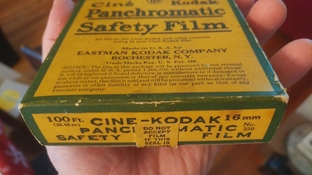bendytwin
Member
I've been meaning to ask this for ages: I have a project where I'm shooting 16mm black-and-white stocks from the 1920s and 30s. Needless to say the age fog is usually very, very high. I often rate these stocks down below ISO 1 to compensate for the age, then pull-process.
Both with paper up to 75 years old and with film I've had lots of experience success using benzotriazole for anti-fog, often alongside potassium bromide. I've never used AF-2000, but if it or other obtainable effective anti-fogging agents could be used alongside additively, I'd be glad to know. Or, if there are developer ingredients I should be avoiding that are detrimental I'd appreciate knowing this as well.
My main question is: mixing from scratch, what would an ideal developer recipe look like to be most amenable for inhibiting fog on century-old materials like this? With enough light, speed loss is relatively unimportant, but the developer should at least produce a pictorially normative tonal scale.
Photo of a 1930s 100ft load of Eastman Ciné-Kodak panchromatic stock -- an example of the films I like to use.
Both with paper up to 75 years old and with film I've had lots of experience success using benzotriazole for anti-fog, often alongside potassium bromide. I've never used AF-2000, but if it or other obtainable effective anti-fogging agents could be used alongside additively, I'd be glad to know. Or, if there are developer ingredients I should be avoiding that are detrimental I'd appreciate knowing this as well.
My main question is: mixing from scratch, what would an ideal developer recipe look like to be most amenable for inhibiting fog on century-old materials like this? With enough light, speed loss is relatively unimportant, but the developer should at least produce a pictorially normative tonal scale.
Photo of a 1930s 100ft load of Eastman Ciné-Kodak panchromatic stock -- an example of the films I like to use.











